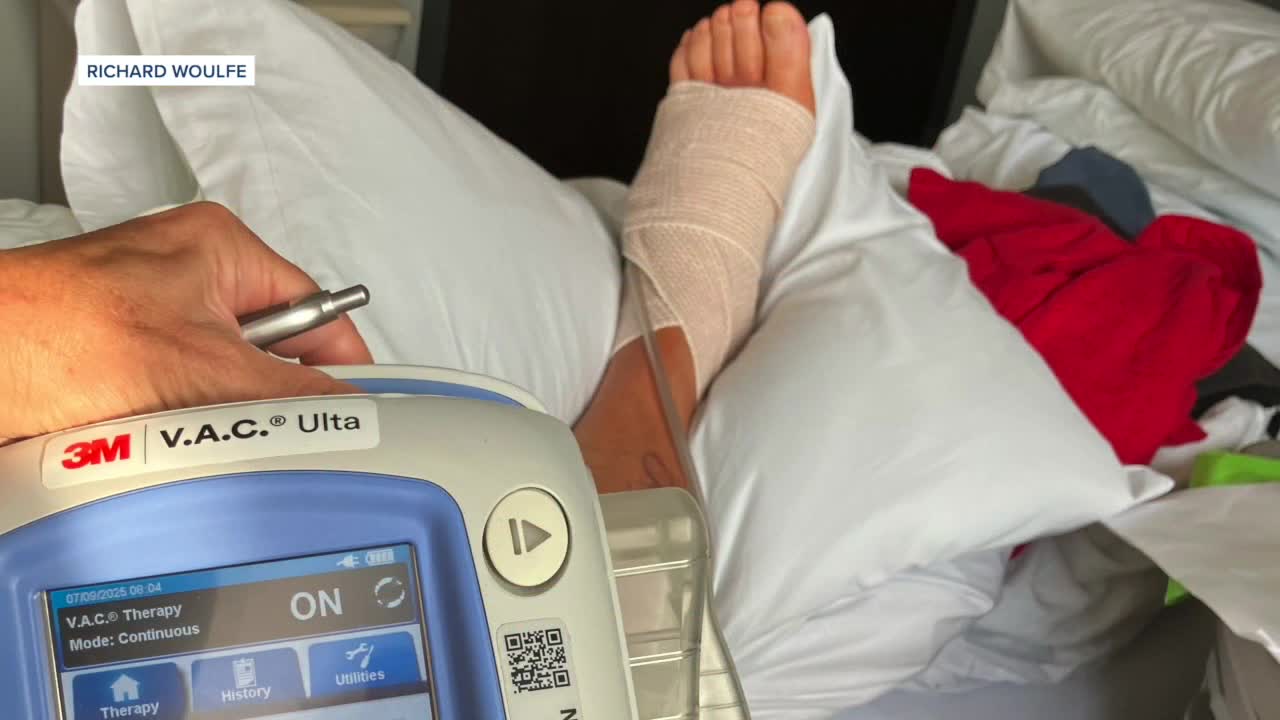SAN DIEGO (KGTV) - A former San Diego resident is recovering after a stingray sting at a local beach led to a dangerous infection that nearly cost him his foot.
Richard Woulfe, 62, was enjoying a brief vacation in San Diego when what was supposed to be a quick swim before his flight back to Texas turned into a medical emergency.
"I was just going for a quick swim before going down to the airport to fly back to Dallas-Fort Worth," Woulfe said.
While wading about 20 feet into the water at Black’s Beach, Woulfe felt something strike his foot.
"When I was just about ready to jump in, I felt a little bit of a tug on the top of my left foot," he said.
Having been stung by a stingray decades earlier, Woulfe immediately recognized what had happened. The puncture wound was small with minimal bleeding, but the pain intensified rapidly within minutes.
He says after calling 911, lifeguards cleaned the wound, soaked it in hot water, and advised him to monitor it. However, the situation deteriorated after he returned to Texas.
Woulfe's foot began swelling the day after the sting. He sought medical attention at an urgent care facility before going to an emergency room, where doctors delivered alarming news.
“So the infection is already starting to taking the foot?” Woulfe recalled asking his doctor, who confirmed, “Yes.”
The diagnosis revealed strep and staph infections had led to gangrene and necrotizing fasciitis – commonly known as flesh-eating disease – inside his foot.
“I’m looking at the video, and you're almost in disbelief. You don't even really have time to show emotion," Woulfe said.
I asked Woulfe how serious his condition became.
"I was within 24 to 48 hours from losing a portion of my foot or my entire foot," he said.
72 hours after the initial sting, doctors performed emergency surgery and successfully saved Woulfe's foot. He underwent a second procedure earlier this week.
"There doesn't appear to be any infection remaining. We're hopefully on a good path for the next few weeks to be fully healed within 4 to 6 weeks," Woulfe said.
Dr. Jeff LaPoint, Division of Medical Toxicology Director at Kaiser Permanente, who did not treat Woulfe, explained that such rare infections can occur from stingray fragments in the wound or from bacteria in seawater.
"Local stingray injuries typically cause pain and swelling due to venom, which is best relieved by soaking the wound in hot water to neutralize the toxin and relieve pain. While the venom itself isn't infectious, infections may still occur—either from fragments of the stringray spine left in the wound or in some cases, from bacteria introduced by seawater at the time of the sting. Most cases heal without complication but it's essential to seek emergency medical care immediately to evaluate the wound, remove any retained debris, and prevent potentially serious infections that, in rare cases, may require surgery," Dr. LaPoint said.
Woulfe said he didn't shuffle his feet while entering the water – a technique experts recommend to reduce the risk of stingray stings.
For beachgoers, Woulfe has this advice: "Just take extra precautions and be aware, and do not wait if you feel like something's not right with the swelling. Do not wait too long to get to the emergency room."
This story was reported on-air by a journalist and has been converted to this platform with the assistance of AI. Our editorial team verifies all reporting on all platforms for fairness and accuracy.




